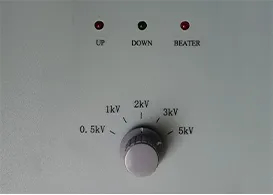 English
English



-
 Afrikaans
Afrikaans -
 Albanian
Albanian -
 Amharic
Amharic -
 Arabic
Arabic -
 Armenian
Armenian -
 Azerbaijani
Azerbaijani -
 Basque
Basque -
 Belarusian
Belarusian -
 Bengali
Bengali -
 Bosnian
Bosnian -
 Bulgarian
Bulgarian -
 Catalan
Catalan -
 Cebuano
Cebuano -
 China
China -
 China (Taiwan)
China (Taiwan) -
 Corsican
Corsican -
 Croatian
Croatian -
 Czech
Czech -
 Danish
Danish -
 Dutch
Dutch -
 English
English -
 Esperanto
Esperanto -
 Estonian
Estonian -
 Finnish
Finnish -
 French
French -
 Frisian
Frisian -
 Galician
Galician -
 Georgian
Georgian -
 German
German -
 Greek
Greek -
 Gujarati
Gujarati -
 Haitian Creole
Haitian Creole -
 hausa
hausa -
 hawaiian
hawaiian -
 Hebrew
Hebrew -
 Hindi
Hindi -
 Miao
Miao -
 Hungarian
Hungarian -
 Icelandic
Icelandic -
 igbo
igbo -
 Indonesian
Indonesian -
 irish
irish -
 Italian
Italian -
 Japanese
Japanese -
 Javanese
Javanese -
 Kannada
Kannada -
 kazakh
kazakh -
 Khmer
Khmer -
 Rwandese
Rwandese -
 Korean
Korean -
 Kurdish
Kurdish -
 Kyrgyz
Kyrgyz -
 Lao
Lao -
 Latin
Latin -
 Latvian
Latvian -
 Lithuanian
Lithuanian -
 Luxembourgish
Luxembourgish -
 Macedonian
Macedonian -
 Malgashi
Malgashi -
 Malay
Malay -
 Malayalam
Malayalam -
 Maltese
Maltese -
 Maori
Maori -
 Marathi
Marathi -
 Mongolian
Mongolian -
 Myanmar
Myanmar -
 Nepali
Nepali -
 Norwegian
Norwegian -
 Norwegian
Norwegian -
 Occitan
Occitan -
 Pashto
Pashto -
 Persian
Persian -
 Polish
Polish -
 Portuguese
Portuguese -
 Punjabi
Punjabi -
 Romanian
Romanian -
 Russian
Russian -
 Samoan
Samoan -
 Scottish Gaelic
Scottish Gaelic -
 Serbian
Serbian -
 Sesotho
Sesotho -
 Shona
Shona -
 Sindhi
Sindhi -
 Sinhala
Sinhala -
 Slovak
Slovak -
 Slovenian
Slovenian -
 Somali
Somali -
 Spanish
Spanish -
 Sundanese
Sundanese -
 Swahili
Swahili -
 Swedish
Swedish -
 Tagalog
Tagalog -
 Tajik
Tajik -
 Tamil
Tamil -
 Tatar
Tatar -
 Telugu
Telugu -
 Thai
Thai -
 Turkish
Turkish -
 Turkmen
Turkmen -
 Ukrainian
Ukrainian -
 Urdu
Urdu -
 Uighur
Uighur -
 Uzbek
Uzbek -
 Vietnamese
Vietnamese -
 Welsh
Welsh -
 Bantu
Bantu -
 Yiddish
Yiddish -
 Yoruba
Yoruba -
 Zulu
Zulu
Equipment for Testing Insulation Resistance in Electrical Systems and Components
Understanding Insulation Resistance Test Equipment
Insulation resistance testing is a crucial procedure in the electrical industry. It helps ensure the safety, reliability, and performance of electrical systems by measuring the resistance offered by insulation materials. Insulation resistance test equipment plays a vital role in this process, providing technicians and engineers with the tools necessary to perform accurate assessments.
Insulation resistance tests evaluate the ability of insulating materials to prevent the flow of electrical current. High resistance values typically indicate that the insulation is in good condition, while low resistance values can signify deterioration, moisture ingress, or damage. Regular testing is essential to avoid potential failures that could lead to electrical shorts, equipment damage, or even fire hazards.
The most commonly used insulation resistance testers are the megohmmeters. These devices apply a high voltage—typically 250V, 500V, or 1000V—across the insulation to assess its resistance. The megohmmeter displays the resistance value in megohms (MΩ), which can help determine whether the insulation meets the required specifications.
Operating an insulation resistance test equipment is straightforward. First, ensure that the equipment is properly calibrated and functioning. The technician then disconnects the electrical equipment under test from any power source to prevent injury and equipment damage. Next, the probes of the megohmmeter are connected to the conductor and ground (or the insulation material being tested). After setting the appropriate voltage level, the technician activates the tester, which provides a resistance measurement. Depending on the readings, decisions can be made regarding the condition of the insulation.
insulation resistance test equipment

The results of insulation resistance tests can be affected by various factors, including temperature, humidity, and the surface condition of the insulation. Therefore, it is essential to conduct tests under controlled conditions and to follow standardized testing procedures.
Many modern insulation resistance testers come equipped with advanced features such as digital displays, automatic voltage selection, and data storage capabilities. Some models can even perform automated testing sequences and generate reports, making the process more efficient and reducing the potential for human error. Wireless connectivity options also enable technicians to transfer data to computers or mobile devices for further analysis.
In addition, regular training and familiarity with the equipment are essential for operators. Understanding the principles of insulation resistance, as well as the capabilities and limitations of the testing equipment, ensures accurate and reliable results. This knowledge helps technicians make informed decisions regarding maintenance, repairs, and replacements of insulation systems.
In conclusion, insulation resistance test equipment is indispensable in maintaining the integrity and safety of electrical installations. By utilizing these tools effectively, professionals can ensure that insulation materials perform reliably over time, thereby safeguarding lives and equipment while reducing the risk of electrical failures. Regular testing combined with the right equipment and expertise contributes significantly to the longevity and efficiency of electrical systems.
-
Testing Equipment Industry Sees Major Advancements in 2025: Smart & Precision Technologies Lead the WayNewsJun.06,2025
-
Applications of Direct Current Generators in Renewable Energy SystemsNewsJun.05,2025
-
Hipot Tester Calibration and Accuracy GuidelinesNewsJun.05,2025
-
Digital Circuit Breaker Analyzer Features and BenefitsNewsJun.05,2025
-
Benefits of Real-Time Power Quality Monitoring Devices for Industrial EfficiencyNewsJun.05,2025
-
Earth Fault Loop Testing in High-Rise Building Electrical SystemsNewsJun.05,2025



